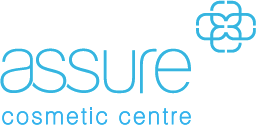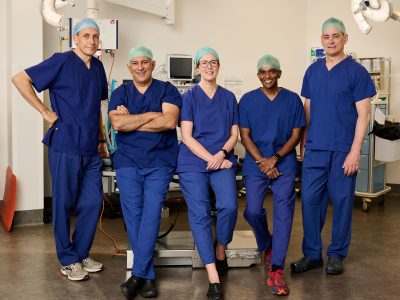The normal male breast is made up of breast tissue as well as fat. Gynaecomastia, often referred to as ‘man boobs’, occurs when breast tissue forms as a mass under the areola and this can affect one or both breasts.
Male Breast Surgery in Perth
Gynaecomastia is very common and affects a significant proportion of men from adolescence through to middle age. The majority of cases have no known cause (idiopathic), but a minority can result from drug use (commonly marijuana or steroid use) or disorders such as testicular dysfunction, hereditary conditions, liver disease, androgen deficiency or thyroid problems.
Equally concerning to many men is a sagging chest resulting from significant weight loss or the normal ageing process. This can cause skin to lose tone and droop (pseudo-gynaecomastia).
While gynaecomastia can be addressed through non-surgical means, such as hormonal adjustments or medical treatments, surgical removal of excess breast tissue remains a recommended option for certain patients. Suction lipectomy is also a viable treatment in some cases.
For male breast reduction surgery, there are crucial factors to consider:
- Age Considerations: Younger men or adolescent boys may need to wait until their breast tissue is fully developed, typically a few years after gynaecomastia onset.
- Weight Requirements: Overweight men who haven’t attempted weight loss through diet and exercise may not be suitable candidates for this procedure.
- Substance Dependency: Patients who developed gynaecomastia due to excessive alcohol consumption, prescription medication, or certain drugs (e.g. steroids, marijuana) must be entirely free of these substances before undergoing surgery.
- Physical Health and Stability: For the most successful outcome, it is important to be in good physical health and maintain a stable weight before considering gynaecomastia surgery.
Book a Consultation
To find out if gynaecomastia surgery in Perth is right for you, the first step is to book an appointment with one of our Specialist Plastic Surgeons.
At Assure Cosmetic Centre, you’re in the care of a highly skilled medical team. Through your journey with us you will feel informed and comfortable and able to make the decision that is best for you.
Frequently Asked Questions
Gynaecomastia
The main goal of gynaecomastia surgery is to reduce your breasts to a size that is in better proportion with your physique and makes you feel more comfortable. Your Specialist Plastic Surgeon at Assure Cosmetic Centre is the best person to determine if your expectations are achievable.
If there is a known cause, then we would investigate that further first. There may be some routine blood tests required and occasionally radiology investigations. If there is no known cause, then surgery options would be discussed during your consultation. Some cases can be treated with liposuction or ‘suction lipectomy’. Others are treated with direct excision of fibrous breast tissue via a small incision at the base of the areola.
In cases where drooping breasts or excess loose skin is present, perhaps following significant weight loss, other cosmestic surgery methods may be required, such as a breast reduction (‘mammaplasty’) or breast lift (‘mastopexy’). This may involve removing excess fat and breast tissue, recontouring the chest and repositioning the nipples.
Your Assure Specialist Plastic Surgeon will take your physical condition and individual needs into consideration to determine the technique that is best for you.
Male breast surgery is performed in an accredited hospital in Perth under general anaesthetic. The procedure usually takes between 1-2 hours. In some cases you can expect to be discharged that same day. Others may require a short hospital stay. This will depend on your general health, the extent of the procedure, and your surgeon’s advice.
You will need to attend a post-operative consultation approximately 5-7 days after gynaecomastia surgery, and again 7-14 days after surgery with subsequent post-op visits if required.
A pressure garment is to be worn for 6 weeks after surgery.
All plastic, cosmetic and reconstructive surgical procedures come with risks and potential complications. To ensure successful surgery, it is crucial to understand and minimise these risks. Whilst all measures are taken to mitigate risks, some risks are unavoidable.
All information on this page is general in nature – your Specialist Plastic Surgeon will discuss the specific risks and complications pertinent to your individual surgical procedure during your consultation. General risks for surgery are listed here.
Specific risks related to gynaecomastia surgery include, but are not limited to:
- Fluid accumulation: After the surgery, there is a possibility of fluid accumulating around the breast. This condition, known as seroma, may require additional procedures to drain the fluid. To prevent any fluid or blood accumulation, thin tubes called a drains may be temporarily placed under the skin while you’re in hospital.
- Fat necrosis: This is a rare complication that can occur when fatty tissue dies. It can cause hard lumps under the skin, but it is usually not a serious problem.
- Changes in breast and nipple sensation: Gynaecomastia surgery may lead to temporary or permanent changes in breast and nipple sensation. Some individuals may experience increased sensitivity, while others may notice reduced sensation.
- Asymmetry (unevenness) of the breasts or nipples: This is a rare complication of gynaecomastia surgery. It can be caused by a number of factors, including differences in the size or shape of the breasts before surgery, or problems with healing. A second procedure may be required to correct the imbalance in size or position.
- Excessive firmness of the breast: This is a rare complication of breast reduction surgery that can be caused by the formation of scar tissue.
- Potential partial or total loss of the nipple and areola: This is a very rare complication of breast reduction surgery. It is usually caused by damage to the blood supply to the nipple and areola.
- Requirement for further surgery to address complications: This is a rare complication of breast reduction surgery. It may be necessary to correct problems such as asymmetry, excessive firmness, or loss of the nipple and areola.
- Recurrence of breast tissue growth following surgery: This can occur if breasts had not finished developing, which is why it is extremely important to wait until growth has stabilised before having surgery.
While your Specialist Plastic Surgeon will take great care to minimise their visibility, it’s important to understand that scars are an unavoidable outcome of any surgical procedure. In the case of male breast reduction surgery, the scars are typically positioned along natural skin lines. If you have a history of keloid or hypertrophic scarring, it’s essential to inform your surgeon about this tendency before the procedure.
Although major complications are uncommon after a gynaecomastia procedure, you may have some bruising and swelling for a few weeks after surgery. Other post-operative complications, such as delayed healing, infection or excessive bleeding are quite uncommon.
Your Assure Specialist Plastic Surgeon will discuss what you can expect from this procedure. It is important to carefully follow your plastic surgeon’s advice to reduce the risk of complications.
Typically, office role patients can expect to resume work within a week after their procedure. However, for those engaged in manual labor or strenuous tasks, a recovery period of approximately 4-6 weeks is often necessary. The duration of your return to work or regular activities depends on your unique circumstances, and your Specialist Plastic Surgeon will provide personalised guidance. To aid the healing process and minimise swelling, it is recommended to wear post-surgical compression garments for up to 6 weeks.
It’s essential to highlight that each patient’s recovery process requires sufficient time, support, and proper postoperative care. Healing abilities and pain tolerance may vary among individuals, resulting in differences in recovery duration and the ability to engage in various activities.
An initial consultation with your Specialist Plastic Surgeon will cost approximately $300-$360, which is payable in full at the time of booking your consultation. Your consultation will take approximately 30-60 minutes. If a Medicare item applies to your potential procedure then you will be entitled to a rebate from Medicare of approximately $80, providing you have a written referral from your GP or specialist. GP referrals are valid for 12 months and specialist referrals for 3 months.
Your Specialist Plastic Surgeon will provide an indication of the likely costs, such as your surgeon’s fee, anaesthetist’s fees and hospital and theatre fees. Your surgeon’s fee includes all post-operative care and nurse dressings. Pricing will vary from case to case, but an indicative range of your surgeon’s fee is $5,500 to $12,000 excluding GST. Anaesthetist, hospital and theatre fees are additional.
There are Medicare and private health insurance rebates available for certain gynaecomastia procedures in Perth. Your surgeon can provide you with more information, but you would then need to talk to your private health insurer to determine exactly how much cover they will provide and confirm what your final out-of-pocket costs will be.


